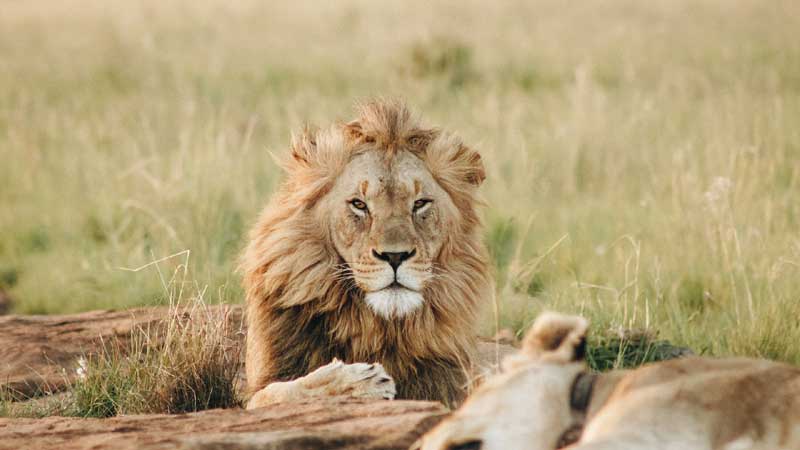Introduction to Wildlife Tourism in India
India, with its astounding biodiversity and a mosaic of landscapes, is a vibrant hub for wildlife tourism. From the majestic Royal Bengal Tiger prowling in the dense forests of Ranthambore to the one-horned rhinoceros grazing on the vast floodplains of Kaziranga, the Indian subcontinent provides unmatched wildlife experiences.
Its geographical diversity, ranging from the icy peaks of the Himalayas to the sun-soaked beaches of the coastal plains, has birthed an array of ecosystems, each with its distinct flora and fauna. Wildlife tourism in India offers an immersive journey into this untouched world, promising unforgettable encounters with its wild denizens.
The Importance of Wildlife Tourism
Wildlife tourism holds paramount importance not only for its recreational and educational value but also as a pivotal component of conservation. It fosters appreciation and understanding of wildlife, thereby cultivating a sense of responsibility towards preserving our natural heritage. It fuels local economies, promotes sustainable livelihoods, and strengthens the incentive for protecting the environment and its biodiversity.
Exploring India’s National Parks and Wildlife Sanctuaries
India is home to numerous national parks and wildlife sanctuaries, each offering a unique foray into India’s rich biodiversity.
Ranthambore National Park, Rajasthan
Located in the Sawai Madhopur district of Rajasthan, Ranthambore National Park is one of India’s most celebrated tiger reserves. The park’s diverse topography of rugged terrains, meandering rivers, and dense forests offers an ideal habitat for the Royal Bengal Tigers, making it one of the prime spots for tiger sightings in India. Besides tigers, Ranthambore is also home to a variety of wildlife, including leopards, sloth bears, crocodiles, and a host of bird species.
Bandhavgarh National Park, Madhya Pradesh
Bandhavgarh National Park, located in the Umaria district of Madhya Pradesh, is another renowned tiger reserve in India. This park is known for its high density of tiger population, making it an excellent destination for tiger safaris. Additionally, it houses various other wildlife species and boasts an ancient fort, contributing to the area’s historical significance.
Kaziranga National Park, Assam
Situated on the floodplains of the Brahmaputra River in Assam, Kaziranga National Park is a UNESCO World Heritage Site. It hosts two-thirds of the world’s great one-horned rhinoceroses, making it a significant conservation area for this endangered species. Apart from the rhinoceros, the park is also home to several other species such as the wild water buffalo, Bengal tiger, and a variety of avifauna.
Sunderbans National Park, West Bengal
Located in the deltaic region of West Bengal, Sunderbans National Park is another UNESCO World Heritage Site in India. Characterized by its vast mangrove forests, the park is home to the Royal Bengal Tiger. The park is renowned for its unique ecosystem, rich biodiversity, and as the abode of the elusive mangrove tiger.
Periyar Wildlife Sanctuary, Kerala
Nestled in the Western Ghats in Kerala, the Periyar Wildlife Sanctuary is famous for its elephant herds and diverse flora and fauna. Travelers can embark on a unique boat ride on the Periyar lake, offering a distinct perspective of the wildlife that frequents the lake’s banks.
Unique Wildlife Species Native to India
India is home to a plethora of unique wildlife species, some of which are endemic to the country. From the Asiatic lion residing in the Gir Forest of Gujarat to the Indian wild dog or ‘dhole’, India’s wildlife is as varied as it is unique. Other unique species include the Nilgiri Tahr, the Indian Flying Fox, and the Gharial.
The Influence of Wildlife Tourism on Conservation Efforts
Wildlife tourism plays a critical role in conservation efforts. It generates revenue that aids in preserving and maintaining these natural habitats. It also raises global awareness about the importance of conservation, as tourists return to their homes with increased knowledge and understanding of wildlife.
The Socio-economic Impact of Wildlife Tourism
Wildlife tourism contributes significantly to the local economy. It creates jobs, supports local businesses, and promotes community development. It aids in the development of infrastructure and the improvement of facilities, which further attract more tourists, creating a positive cycle of growth and development.
Challenges Facing Wildlife Tourism in India
Despite its potential, wildlife tourism in India faces numerous challenges. These include habitat loss due to deforestation and urbanization, poaching, and human-wildlife conflicts. There is also the challenge of managing tourist activities in a way that minimizes disturbance to wildlife and their habitats.
Future Prospects for Wildlife Tourism in India
The future of wildlife tourism in India is promising. With proper planning, sustainable practices, and effective conservation efforts, wildlife tourism can flourish, contributing to both the economy and the preservation of India’s rich biodiversity.
Tips for Responsible Wildlife Tourism
Responsible wildlife tourism entails respecting wildlife and their habitats. It includes maintaining a safe distance from wildlife, not feeding the animals, staying on designated paths, and disposing of waste responsibly. It also means supporting local businesses and communities and promoting conservation efforts.
Conclusion
India, with its incredible biodiversity and varied landscapes, offers unrivalled opportunities for wildlife tourism. Despite the challenges, with responsible practices and sustainable tourism, India can continue to be a haven for wildlife enthusiasts, contributing to global conservation efforts and the local economy. This unexplored world of wildlife tourism in India beckons the global community to participate in this unique journey of discovery and conservation.
